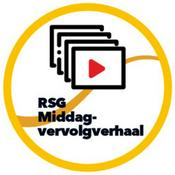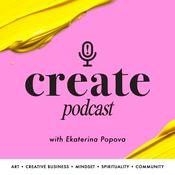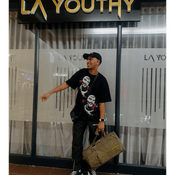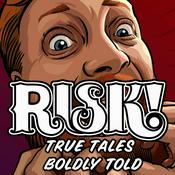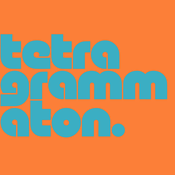84 episodes

Green flags over red flags: Navigating today's brutal job market with Jermaine 'The Jobfather' Murray
2025/8/12 | 50 mins.
Back in spring 2024, I recorded a handful of episodes with no idea they’d take the scenic route to your inbox. Life had other plans, but the conversations held up beautifully, maybe even better with a little time to breathe. This is the first in a short run of those spring episodes, and I think you’ll find it worth the wait.In this episode of Technically Speaking, I'm joined by Jermaine Murray also known as The Jobfather. He's a career coach and founder of Jupiter HR, who's vision is to help 500 Black professionals land jobs in tech (he’s currently at 448).We get into the state of today's job market from employer indifference toward DEI to the rise of AI, and what it actually takes to future-proof your career. Jermaine shares his approach to identifying green flags when evaluating companies, how to avoid burnout while doing meaningful work, and why now is the time to invest in yourself even when the odds feel stacked against many.This one's part motivation, part strategy, and packed with sharp insights for anyone navigating change. We also had a few moments of laugh out loud laughter from his stories.Key Takeaways* Leverage Your Past Skills: Don't abandon previous experience when transitioning to tech - assess what you're good at, what you like, and what you've had success with to find the right tech role* Job Market Reality Check: Current tech job searches take 9-18 months (vs. 2-3 months previously) due to increased competition and fewer opportunities - timing and referrals are crucial* DEI Shift: Companies have moved from active diversity requirements to "indifference" - focus on finding places where you're appreciated, not just tolerated* Embrace AI as a Tool: You won't be replaced by AI, but by someone leveraging AI better than you - adapt and use it as a productivity multiplier rather than fear it* Ask the Hard Questions: Always interview to know your market value, and directly ask about things that make you anxious (company stability, layoff history, diversity support) - how they respond matters more than what they sayNotable Quotes"Ask them the most awkward things. The things that make you feel anxious. Ask them... what happens with disruptions or new technologies.""Taking an interview is not the same as job hopping... you should always be interviewing so that you know what your real time value is and whatever decision that you make is an informed decision.""You can't be scared of AI... you will be replaced by somebody that is leveraging AI rather than AI itself.""Why do you think that your employer owns the skills that you carry with you in your body? They own the time that you work for them, but all the skills you carry with you."Resources* Follow Jermaine on LinkedIn, Twitter, Instagram, TikTok* JupiterHR* Harrison on LinkedIn, InstagramTimestamps00:00 Introduction00:30 Meet Jermaine Murray "The job father"00:47 Jermaine's mission and success stories02:05 Balancing work and health03:01 Gaming talk: from Final Fantasy to Nvidia04:30 Current obsessions: fitness journey07:41 Unusual jobs and memorable stories11:59 The origin of 'The job father'17:54 Defining tech and career advice24:29 Understanding career motivations25:10 Leveraging past skills in new roles27:35 Recruitment strategies and market trends30:51 The impact of DEI in the workplace35:02 Navigating AI and technological advancements40:18 Identifying green flags in job opportunities47:25 Final thoughts and contact information Get full access to Technically Speaking at technicallyspeakinghw.substack.com/subscribe

Human-centered AI: Ovetta Sampson on design risks and rewards
2025/5/05 | 43 mins.
This episode of AI Product Builders is a must-listen. I’m joined by Ovetta Sampson, founder of Right AI and one of the sharpest minds in the AI and design space. With a career that spans leadership roles at Google, Capital One, and IDEO, Ovetta brings a powerful, context-driven lens to the hype around generative AI.We get into:* Why she left Google to build Right AI* The risks no one’s talking about in AI product development* What MoviePass, the Black Death, and Silicon Valley have in common* The real environmental and economic costs of running LLMs* What design leaders need to unlearn now* Her “Mindful AI” framework for building responsible, people-first experiences* Why systems thinking beats wireframes, and what it really takes to design for the future Ovetta breaks it all the way down, history, economics, tech, and the human cost of innovation. This one’s part philosophy lesson, part design critique, part wake-up call.Timestamps02:09 Origins of Ovetta's company Right AI05:15 Moving fast and breaking things...again10:20 The risks of funding with no business models18:56 Enviornmental sustainability30:18 Principles of building a responsible experience34:01 What's top of mind for design leaders?43:24 ClosingMentions* Right AI* LinkedIn - Follow her on LinkedIn for hot takes and sharp truths* The Philosopher’s Zone (Podcast) – She references a philosophy podcast about the Dark Ages* Gutenberg & the Printing Press – Used as a metaphor for today’s AI hype* MoviePass – Referenced extensively as an analogy for unsustainable business models* Black Death / Plague – Referenced in historical parallel to today's societal resetFollow Harrison Wheeler and Technically Speaking* Newsletter* LinkedIn* YouTubeTechnically Speaking is where I share reflections, insights, and conversations to help you lead with confidence, clarity, and community. Are you looking to level up your design leadership and management craft? Spend an hour with me for personalized 1:1 coaching to help you thrive in your role. Get full access to Technically Speaking at technicallyspeakinghw.substack.com/subscribe

Vibe coding: A beginner's guide with Kyle Zantos
2025/5/05 | 44 mins.
I’m joined by the imaginative Kyle Zantos, a Seattle-based designer, builder, and musician with over a decade of experience across UX, product, and brand. Kyle’s worked at startups and consultancies, but lately he’s been diving into AI through deeply personal, playful projects that blend creativity, tooling, and experimentation.We get into:* Why he shifted from music to design, and now from design to building AI tools* How he used AI to build a Figma plugin without any coding background* The tools in his AI stack and how he actually uses them (Claude, Cursor, Lovable, Vercel, and more)* What MCPs are and how they help Claude "remember" his context across chats* Why rapid prototyping now beats hours in Figma* His framework of “Software as a Gift,” building custom apps just for friends* A look at the Jeopardy-inspired app he built for his trivia-loving best friendKyle brings curiosity, technical scrappiness, and real heart to everything he builds. Whether you’re a designer figuring out how to start with AI or just looking to rekindle some joy in your craft, this one’s for you.Timestamps00:00 Introduction02:07 Kyle's musical interests and background06:41 Kyle's journey into "vibe coding"13:02 From an early course to building som ething functional20:59 Leveraging MCPs to build smarter26:26 Software as a gift36:49 Where AI has influenced Kyle's design process38:59 How can design org incentivize to close the skills gap41:29 How to get started with AI43:15 ClosingFollow Kyle* Website: https://kylezantos.com* Twitter: https://twitter.com/kylezantos* LinkedIn:https://www.linkedin.com/in/kylezantosMentions* Jeopardy practice game — Kyle launched (in time for this release)* Claude (by Anthropic) — AI assistant used throughout Kyle's workflow* Cursor — AI-first code editor forked from VS Code* Lovable — No-code AI app builder Kyle uses for software-as-gift experiments* Vercel — Deployment platform for full-stack apps* SuperWhisper — Voice-to-text transcription tool* Ammaar Reshi — Design leader at DeepMind; inspired Kyle's early AI buildsFollow Harrison Wheeler and Technically Speaking* Newsletter* LinkedIn* YouTubeTechnically Speaking is where I share reflections, insights, and conversations to help you lead with confidence, clarity, and community. Are you looking to level up your design leadership and management craft? Spend an hour with me for personalized 1:1 coaching to help you thrive in your role. Get full access to Technically Speaking at technicallyspeakinghw.substack.com/subscribe

Inside the creative process: Jay Demetillo leads Canva’s bold leap beyond traditional spreadsheets
2025/5/05 | 41 mins.
In this episode of AI Product Builders, I sit down with Jay Demetillo, design lead at Canva, to talk about what it means to design spreadsheet experiences for the future. Jay has worked all over the world—from Grab in Southeast Asia to leading the design of AI features inside Canva Sheets. Now based in Australia, he shares what it took to reimagine a legacy product, modernize complex workflows, and bring AI in as a meaningful co-pilot, not just a gimmick.We get into:* The drag-and-drop design challenge no existing tool could solve and how he had to rely on his ingenuity* Prototyping high-fidelity interactions with ProtoPie to shape engineering scoping* Why working across time zones requires clarity, collaboration, and great prototypes* How Canva Sheets makes data visualization, formulas, and mobile editing easier for everyday users* The principles behind Canva’s “magic” AI features like Magic Insights and Magic Formulas* Jay’s own side project: an article tracker app built with AI* What working with AI taught him about the limits of solo buildingThis episode isn’t about slapping AI on a product. It’s about thoughtful design, real teamwork, and pushing past the hype to deliver something users actually need.Mentions* Canva Sheets: Jay’s current product focus* ProtoPie: Interactive prototyping tool used for high-fidelity handoff* Claude: Used for early AI prototyping* Cursor: IDE for building with AI* Jay Demetillo on LinkedIn: Follow his updates and perspectivesFollow Harrison Wheeler and Technically Speaking* Newsletter* LinkedIn* YouTubeTechnically Speaking is where I share reflections, insights, and conversations to help you lead with confidence, clarity, and community. Are you looking to level up your design leadership and management craft? Spend an hour with me for personalized 1:1 coaching to help you thrive in your role. Get full access to Technically Speaking at technicallyspeakinghw.substack.com/subscribe

Breaking up with mockups: Filip Skrzesinski on Subframe's real-time design with code
2025/5/05 | 42 mins.
In this episode of Technically Speaking: AI Builders, I sit down with Filip Skrzesinski, co-founder of Subframe, the UI design tool built for the AI era.Subframe isn’t just another no-code platform or AI playground. It’s a visual way to build production-ready software, allowing designers and non-technical teammates to collaborate directly with engineers using code-native components, real-time prototyping, and AI-assisted workflows. Filip calls it “design with code.”We unpack what it really means to bridge the gap between design and development, the philosophical shift away from static mockups, and how Subframe puts creative control back into the hands of full product teams. We also get into:* Why designers should think more like engineers (and vice versa)* How AI becomes a co-creator, not a replacement* What makes a good design system “trainable” for AI* Why stress-testing components in Subframe feels like building your own mini design tool* What it looks like when prototyping and production mergeIf you’re a designer, builder, or curious product leader navigating the messy middle of AI and UI, this episode offers practical insights, creative inspiration, and a glimpse into the future of design tools.Learn more at subframe.comTimestamps00:00 Filip Skrzesinski x Harrison Wheeler: AI Product Builders Series00:25 Introduction02:56 Where Subframe sits in the product development process06:02 The origin story10:39 The ideal customer profile21:13 What makes Subframe stand out?27:11 Where a designers job starts30:15 Examples of how people are using the platform34:51 How to get started within minutes37:26 How organizations can embrace40:18 Closing and whats nextMentions* Subframe.com — Official website* Filip Skrzesinski on LinkedInFollow Harrison Wheeler and Technically Speaking* Newsletter* LinkedIn* YouTubeTechnically Speaking is where I share reflections, insights, and conversations to help you lead with confidence, clarity, and community. Are you looking to level up your design leadership and management craft? Spend an hour with me for personalized 1:1 coaching to help you thrive in your role. Get full access to Technically Speaking at technicallyspeakinghw.substack.com/subscribe
More Arts podcasts
Trending Arts podcasts
About Technically Speaking with Harrison Wheeler
Listen to Technically Speaking with Harrison Wheeler, The Moth and many other podcasts from around the world with the radio.net app

Get the free radio.net app
- Stations and podcasts to bookmark
- Stream via Wi-Fi or Bluetooth
- Supports Carplay & Android Auto
- Many other app features
Get the free radio.net app
- Stations and podcasts to bookmark
- Stream via Wi-Fi or Bluetooth
- Supports Carplay & Android Auto
- Many other app features


Technically Speaking with Harrison Wheeler
download the app,
start listening.







